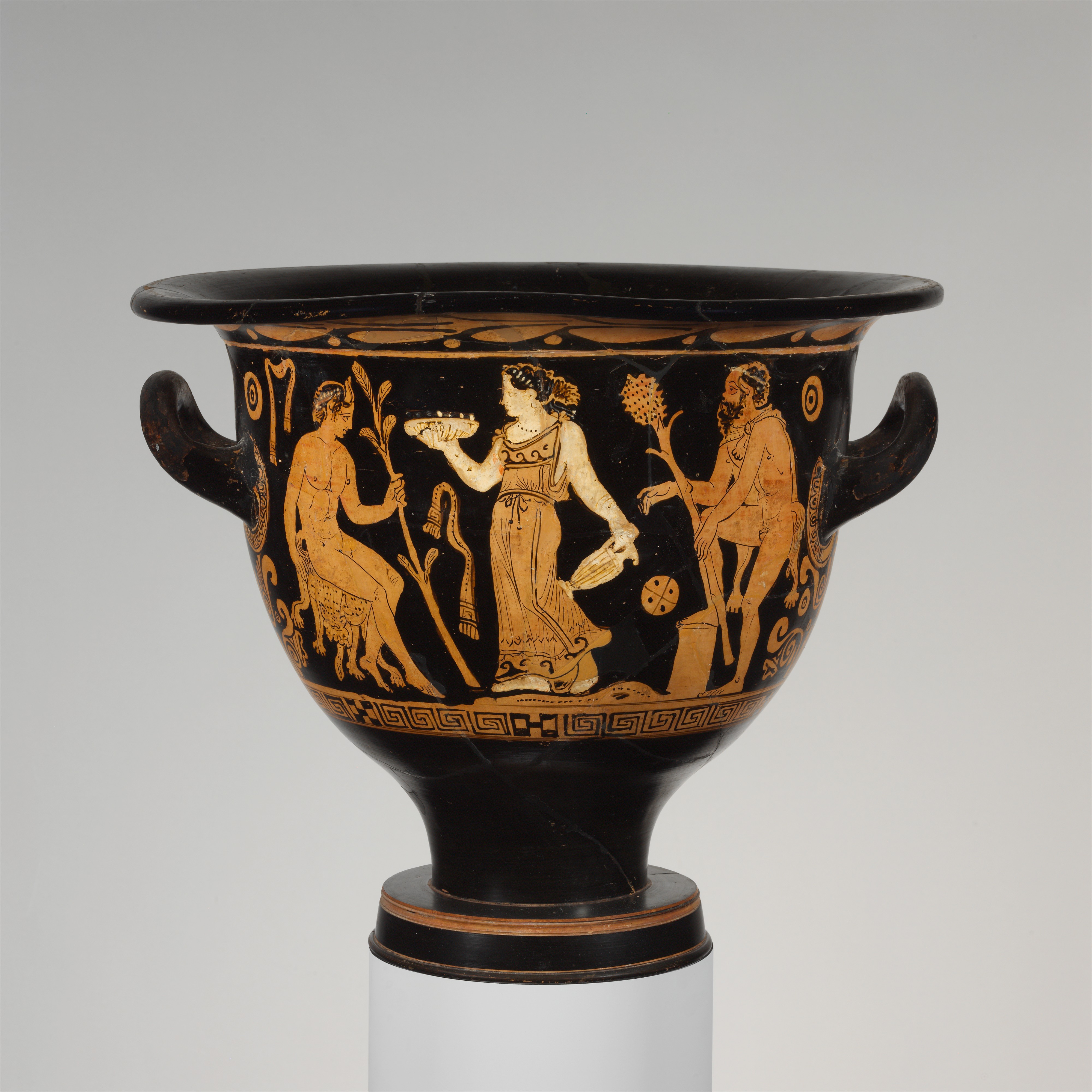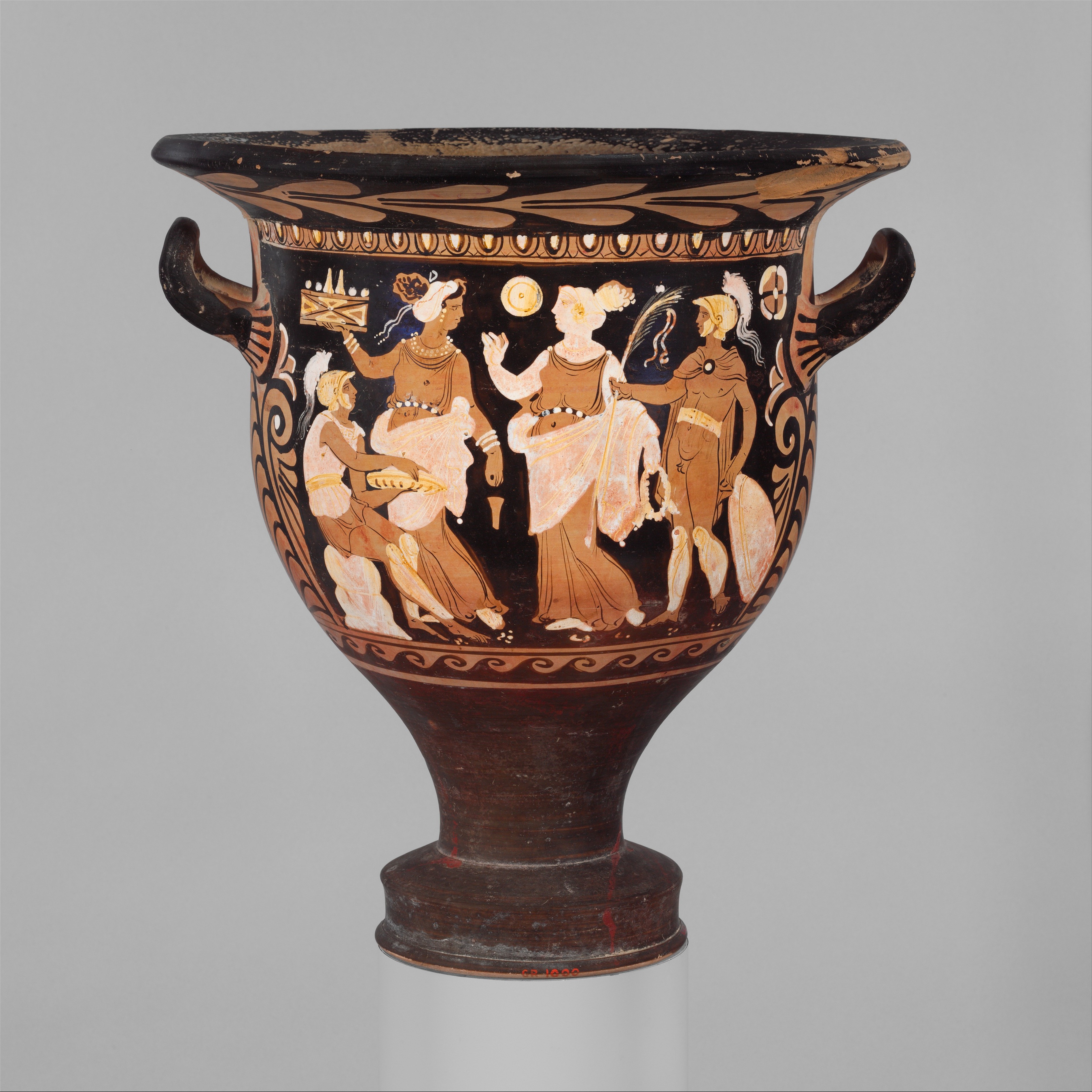
The firing was stopped before the slip turned red once again. The fresh oxygen supply turned the pottery back to red. Free for commercial use, no attribution required.

The kiln was then starved of oxygen and filled with carbon monoxide (by using wet fuel), causing the slip to turn black. Download Image of Terracotta bell-krater (bowl for mixing wine and water). Careful control of the firing process allowed Greek potters to oxidise the body of the pot, turning it red, by keeping the kiln well ventilated. The vase is decorated in the 'red figure' technique in which the areas surrounding the figures are painted in a slip (mixture of clay and water), leaving the red pottery showing through. Download free image of Grecian lady at the bath from An illustration of. These formed the nucleus for Hope's own collection of vases, which he displayed at Duchess Street. Terracotta bell-krater (bowl for mixing wine and water) Ancient Vase, Ancient. The Harvard Art Museums Bell Krater: Torch Race (1960.344, dated c. In 1801 Hope purchased the second collection of ancient vases formed by Sir William Hamilton, formerly the British Ambassador to the Naples court. In preparation for exhibition, an ancient Greek terracotta krater received treatment. (1807), illustrating objects he had designed for his London house at Duchess Street. The most important of these publications was Household Furniture and Interior Decoration. The vase was once owned by Thomas Hope (1769-1831), the collector, connoisseur, patron and designer, who published a number of influential books of designs. Dionysus was the only god who could convince Hephaestus to free Hera from the.

The krater was an ancient Greek vase with two handles that was used to mix wine and water. The red figure calyx krater is representation of4th and 5th.


 0 kommentar(er)
0 kommentar(er)
